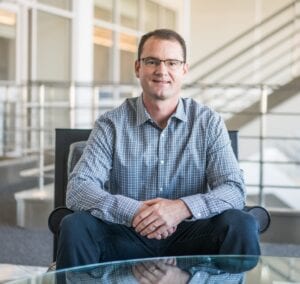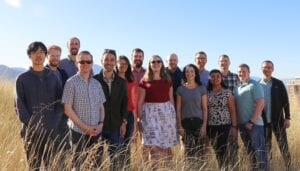Posted By: Sarah Ratzel, PhD, Science Editor, AJHG
Each month, the editors of The American Journal of Human Genetics interview an author of a recently published paper. This month, we check in with Aaron Quinlan to discuss his paper, “De novo structural mutation rates and gamete-of-origin biases revealed through genome sequencing of 2,396 families”.

AJHG: What caused you to start working on this project?
AQ: My lab has broad interests in the mechanisms, patterns, and consequences of genome mutation. Prior to this study, we explored (Havrilla et al, 2019) where point and INDEL mutations are not observed in individuals without developmental disorders, inferring that such regions are under developmental constraint. We then studied germline point mutations in large, three-generation CEPH pedigrees to reveal significant inter-family differences in the rate at which point mutations increase with parental age (Sasani et al, 2020). The current study was a natural next step: we wanted to understand whether the burden of structural mutations in the germline increased with parental age by using both the CEPH pedigrees and the thousands of families whose genomes were sequenced by the Simons Foundation.
AJHG: What about this paper most excites you?
AQ: Going into this study, we knew there is a strong, reproducible correlation between both paternal and maternal age and the burden of point mutations in the germline. We were therefore most surprised by the fact that we did not see such a correlation for structural changes (ignoring aneuploidies). This suggests a number of possibilities, including: stronger purifying selection on structural mutations; mutation mechanisms that do not accumulate with increased cell divisions; biases against the detection of such mutations with shorter DNA sequences; and insufficient cohort sizes.
AJHG: Thinking about the bigger picture, what implications do you see from this work for the larger human genetics community?
AQ: These findings argue that if there is a parental age impact on structural mutation burden, it is far weaker than that of point mutations. However, the possibility of methodological biases against the detection of certain classes of structural mutations argues the need for continued development of computational and molecular techniques for characterizing all forms of mutation in our genomes.
AJHG: What advice do you have for trainees/young scientists?
AQ: Immerse yourself in your field of study. Read as much as possible. Ask questions when you don’t understand. Keep a meticulous list of the things you don’t understand and methodically strike them from your list with focused learning. You’ll be amazed at quickly consistent reading and focused learning pays off in developing a sufficient background for scientific creativity and new skills.
AJHG: And for fun, tell us something about your life outside of the lab.
AQ: I started playing squash (racquetball but with a frustratingly not bouncy ball) three years ago and have become obsessed with it. There is something about chasing a little rubber ball around a court that does wonders for thought annihilation and stress relief. It is great exercise as well – I highly recommend it.
Aaron Quinlan, PhD is a professor in the Department of Human Genetics and Biomedical Informatics and an Associate Director of the USTAR Center for Genetic Discovery at the University of Utah.
